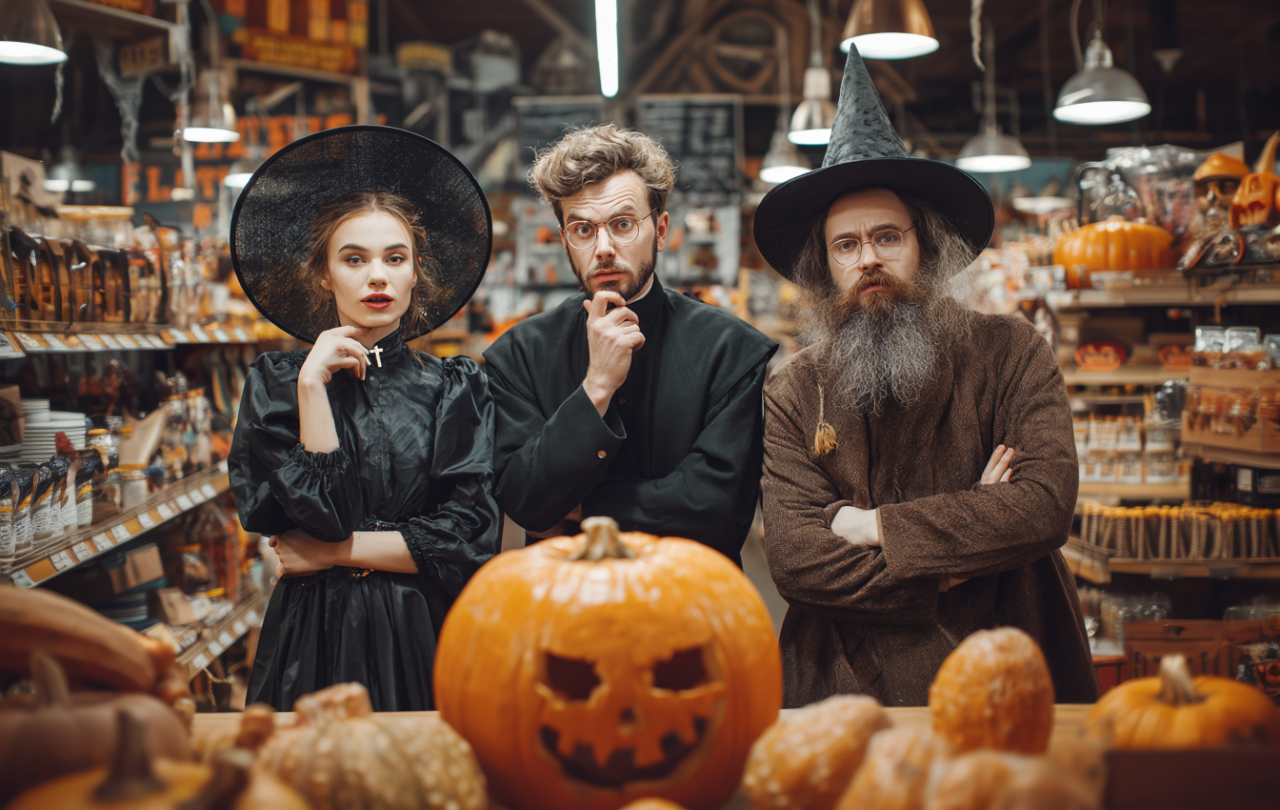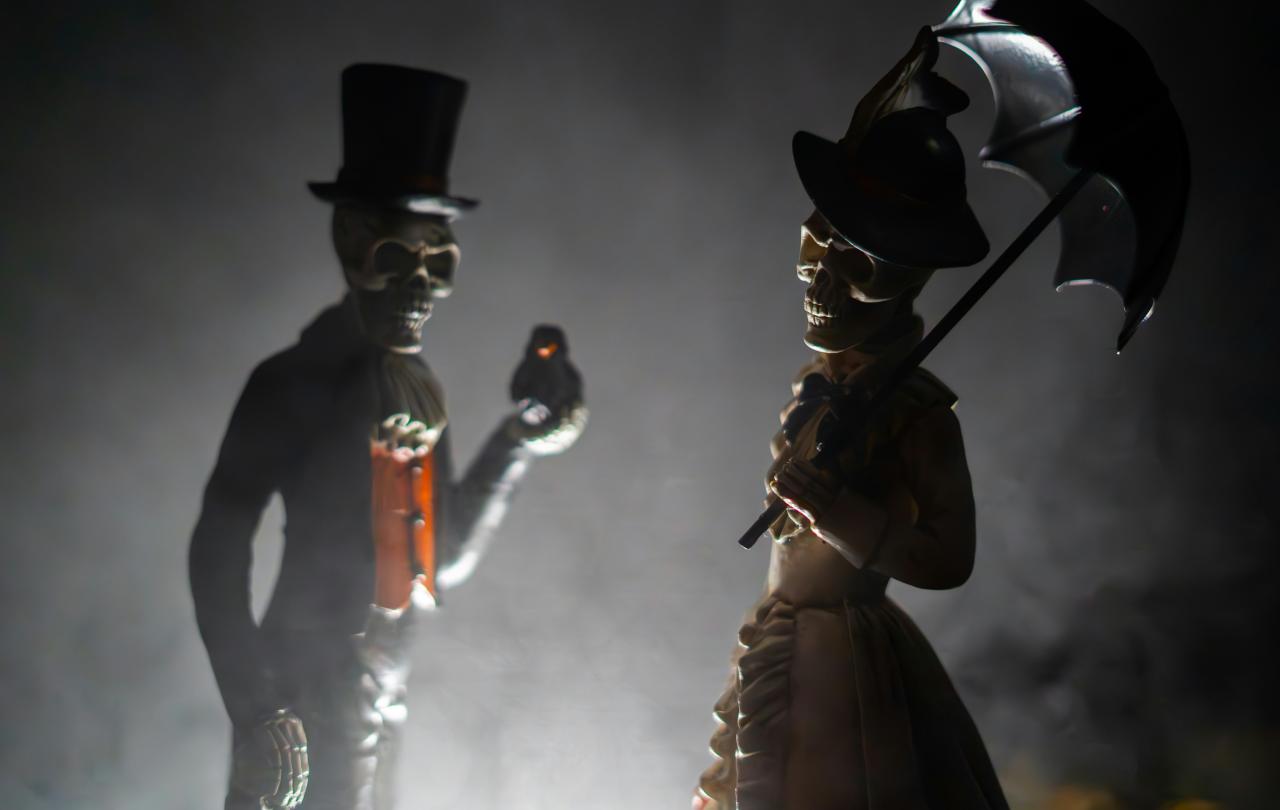
The trouble with modern Halloween is that it’s hard to say who it really belongs to. Our contemporary public holiday – 31 October, when people dress up as skeletons, light jack-o-lanterns, and go ‘trick-or-treating’ – has a few prospective owners.
Perhaps Christians could claim it. The term “Halloween” is a shortening of ‘All Hallow’s Eve’, which is the day before All Saint’s Day (1 November) in the Church calendar.
But this doesn’t fit with a few things. Don’t Christians dislike all that dressing up as evil spirits, and summoning up misrule and revelry? Instead, the case is made for a pagan ownership of Halloween: it was all due to a Celtic festival called Samhain (pronounced ‘sow-in’). This was a day for appeasing evil spirits, contacting the dead, and acts of mischief – all better fits for modern Halloween, surely?
Sadly, we just don’t know enough about Samhain to say. We only have evidence about it from centuries after the Christian era, and in limited scraps like: “Samhain, when the summer goes to its rest”. It is unlikely the Christians invented this, to be sure – but none of the data tells us how it was celebrated.
In fact, there is no evidence at all that All Saints Day was a churchy attempt to ‘take over’ a pre-existing pagan festival. From the get-go, Christians commemorated their dead on the basis that they were still alive in heaven, and able to bring prayers to God. A quick peek at the Book of Revelation (the final book of the Bible) gives a behind-the-curtain look: “and the smoke of the incense, with the prayers of the saints, rose before God from the hand of the angel”.
Over time, it became more official which ‘holy ones’, or saints, should be honoured at which times. This was not about making dead Christians into gods, though. A famous theologian called St Augustine explains the proper view of the early Christians as they kept hold of bones and clothing from their dead: “We do not build temples, and ordain priests, rites, and sacrifices for these same martyrs; for they are not our gods, but their God is our God”.
Gradually, a date was set to celebrate all those great men and women in heaven – from this came All Saints, or All Hallows Day. A tradition in northern Europe set this on the 1 November: “As a jewel worn on the brow sparkles time and again, so November at its beginning is resplendent with the praise given to all the saints” reports an English calendar from around 800AD.
It is all well and good celebrating those who have made it to heaven. But what about the majority of Christians? Those who had died unrepentant and lukewarm – what on earth could be done for them? Here came another separate development: offering prayers and worship on behalf of those who had died as forgiven sinners, but who were still, if you like, serving their time for their bad choices.
It gradually became the norm to tack that practice onto the pre-existing All Saints Day, so that the souls of regular Joes could have powerful heavenly intercessors close by. And so, All Souls Day became an established part of the Church’s year too, falling on 2 November.
But here’s the twist. This season of ‘Hallowtide’ (All Saints and All Souls together) carried on for centuries, until England suddenly and violently abandoned it all in the sixteenth century. Seemingly overnight, the Reformations of the Tudor monarchs ended All Souls Day by scrapping all mention of a purgatory for the dead, and attempts to pray for them there. All Saints Day limped on in the new Established Religion as a remembrance of Christian exemplars – but they were not to be thought of as in radio contact from heaven anymore.
Some people tried to carry on as usual, in illicit gatherings on hilltops, where they would burn straw, and gather to ask for help from great saints and pray for loved ones. But the majority followed the new religious settlement and tried to forge new communal rituals as best they could. The night still had a ‘supernatural’ afterglow thanks to centuries of the now-absent All Saints and All Souls.
Then, in the nineteenth century, there was a comeback. Irish immigration to the USA and Great Britain plonked a fully formed Hallowtide into English-speaking culture again. It took like a duck to water. Perhaps this was to be expected. Here was a civilisation which had been rapidly deprived of its ordinary way of expressing connection to their deceased loved ones, as well as a sense of protection from heavenly guardians. They were clearly starving for some way to communicate feelings about ‘the beyond’, and to find hope in the darkening, colder days.
‘Halloween’, really a modern döppleganger of All Hallow’s Eve, quickly became a popular national custom – a world custom, indeed, due to US influence. It took from Christianity that otherwordly atmosphere – but it did not jettison any of the customs that had arisen since the Reformation, and which were themselves continuations of folky responses to the coming of Winter; Samhain is almost certainly a part of that background here, even if it is not a direct connection, as we have seen.
This Halloween mystery has a twist, then. Here is really a mutant of a festival that belongs to no one in particular - and that is the point. One could really call it one of modern pluralistic society’s great achievements. It has taken over management of this eerie season from the church, and arguably made a successful shared custom out of it. On the other hand, it is arguably consumeristic, tacky and frequently immoral: it was only a few years ago that supermarket costumes allowing people to dress as ‘mentally ill’ showcased this shallowness.
So, as a Christian, I have some regrets that Christianity does not really ‘own’ modern Halloween, anymore. Because the original All Hallows, as well as All Souls, seem to me to be a historic high point of confidence about our human fate. Here was a whole civilisation that seemed to announce to itself, every November, that death, human wickedness, and the Devil, were not in charge here – those who had died in Christ were now more fully alive; that no one is so beyond hope that they are not worth praying for. The darkening nights and colder air must have seemed less daunting to them.
Support Seen & Unseen
Since Spring 2023, our readers have enjoyed over 1,500 articles. All for free.
This is made possible through the generosity of our amazing community of supporters.
If you enjoy Seen & Unseen, would you consider making a gift towards our work?
Do so by joining Behind The Seen. Alongside other benefits, you’ll receive an extra fortnightly email from me sharing my reading and reflections on the ideas that are shaping our times.
Graham Tomlin
Editor-in-Chief





